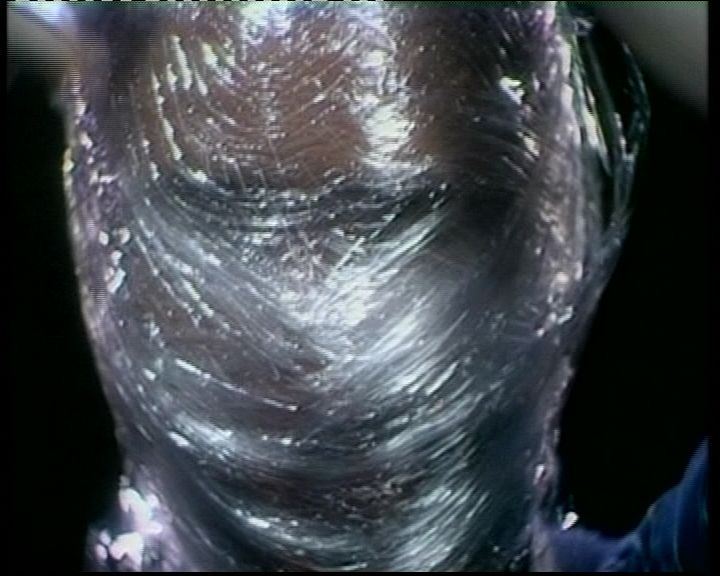Peter Campus
Campus earned his first degree in Experimental Psychology at Ohio State University and later studied at the City College Film Institute.
During the seventies, Campus made a fundamental and outstanding series of closed-circuit video installations and video projections, both thematically and formally related to his artistic investigations, as exemplified in each single work. These video installations entail a reflection on the position of the spectator and his/her perceptive experience as integral parts of audiovisual research.
Self-observation through faces and bodies, seen in its phenomenological extensions in space, is represented and deployed with the use of mirror effects and negative images, inversions and doublings in a fascinating and introspective psychological and visual exploration of the physical presence of the observers. In Boston, between 1973 and 1976, Campus produced a series of videos considered milestones in his career. In these short works, the artist also participates as an actor, performing gestures and actions that are then re-elaborated electronically. The gestures, the presence of the performer’s body, and often his face, evoke a meditative dimension of intense psychological and even philosophical exploration. Through a skillful use of the technical and expressive characteristics of video, Campus develops the possibilities of this medium through effects such as the chroma key (the removal of a layer of color), video feedback, and the Larsen effect (feedback between microphone and amplifier). Focusing on the relationship between illusion and reality, Campus has elaborated an intense study concerning representation modalities and video as mirror of identity. [FB]
List of works
Dynamic Field Series, 1971
video, black and white, sound, 23 min. 42 sec.
Castello di Rivoli Museo d’Arte Contemporanea, Rivoli-Torino
Purchased with the contribution of the Compagnia di San Paolo
Through an exploration of the perception of physical and illusory space surrounding him, in this first video work Campus tests the ability of vision on the part of the video camera in relation to the performer and the viewer. First, the artist aims the camera towards his feet, giving the impression that the floor tilts and turns. He then lies on the floor and his body appears to advance, recede, or spin with the use of a camera pulled and moved with an attached cord. Finally, he wraps the video camera with gauze or cellophane and creates unique visual effects as he gradually frees the camera with a pair of scissors.
Three Transitions, 1973
video, color, sound, 4 min. 53 sec.
Castello di Rivoli Museo d’Arte Contemporanea, Rivoli-Torino
Purchased with the contribution of the Compagnia di San Paolo
In the first Transition, Campus simultaneously films a yellow, two-dimensional surface from both sides using two video cameras. As he stands centered within the video frame, an incision he makes in the yellow background also appears to pass through his own body. In the second part, he uses the chroma key effect in order to obtain (also on a metaphorical level) a new and unusual result. With one hand he erases his face, behind which another image emerges. In the final part, he burns the image of his own face, holding it as if it were a photograph. The burning results in a black screen.
R-G-B, 1974
video, color, sound, 11 min. 30 sec.
Castello di Rivoli Museo d’Arte Contemporanea, Rivoli-Torino
Purchased with the contribution of the Compagnia di San Paolo
Campus, the protagonist, obtains a very particular self-portrait through video technology by physically, mechanically, and electronically manipulating the colors. Observing the “eye” of the video camera, he first puts color gelatine on the lens, projecting pure color onto himself. He aims the video camera towards the monitor and, in retouching the color values, he creates a chain reaction of infinite image multiplication (Larsen effect). Finally, he immerses his body in the horizon of the images that are saturated with electronic chromatism, thereby letting himself be absorbed to the point of disappearing inside a sea of colored signals.
Set of Coincidence, 1974
video, color, sound, 13 min. 24 sec.
Castello di Rivoli Museo d’Arte Contemporanea, Rivoli-Torino
Purchased with the contribution of the Compagnia di San Paolo
The first work produced by Fred Barzyk, it was made shortly after the death of Campus’ father. As the protagonist, the artist sets out to explore a room and then a long tunnel made up of video sound signals. Numerous and simultaneous images of himself multiply and enlarge the perception of his body during the video.
East Ended Tape, 1976
video, color, sound, 6 min. 46 sec.
Castello di Rivoli Museo d’Arte Contemporanea, Rivoli-Torino
Purchased with the contribution of the Compagnia di San Paolo
Through a series of brief actions carried out by the artist with a female collaborator, simple situations develop. Each episode shows the effects of a single action on a close-up of a human face. The woman erases her face with the shadow of her hand, while the man hides under a wrapping.
Six Fragments, 1976
video, color, sound, 5 min. 07 sec.
Castello di Rivoli Museo d’Arte Contemporanea, Rivoli-Torino
Purchased with the contribution of the Compagnia di San Paolo
As in a dreamlike and theatrical mise en scène, Campus gathers together several performers to recite a text. Two lines form the structure of the narration, based on the transcription of a dream through six evocative images.





